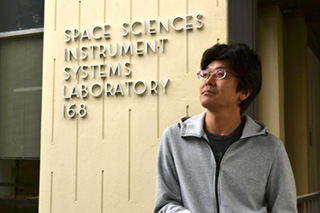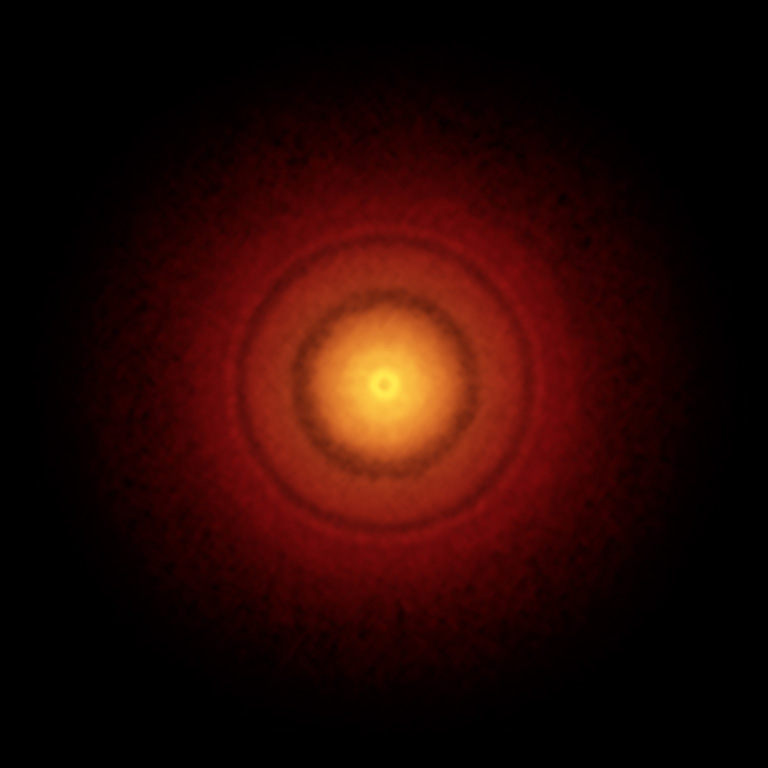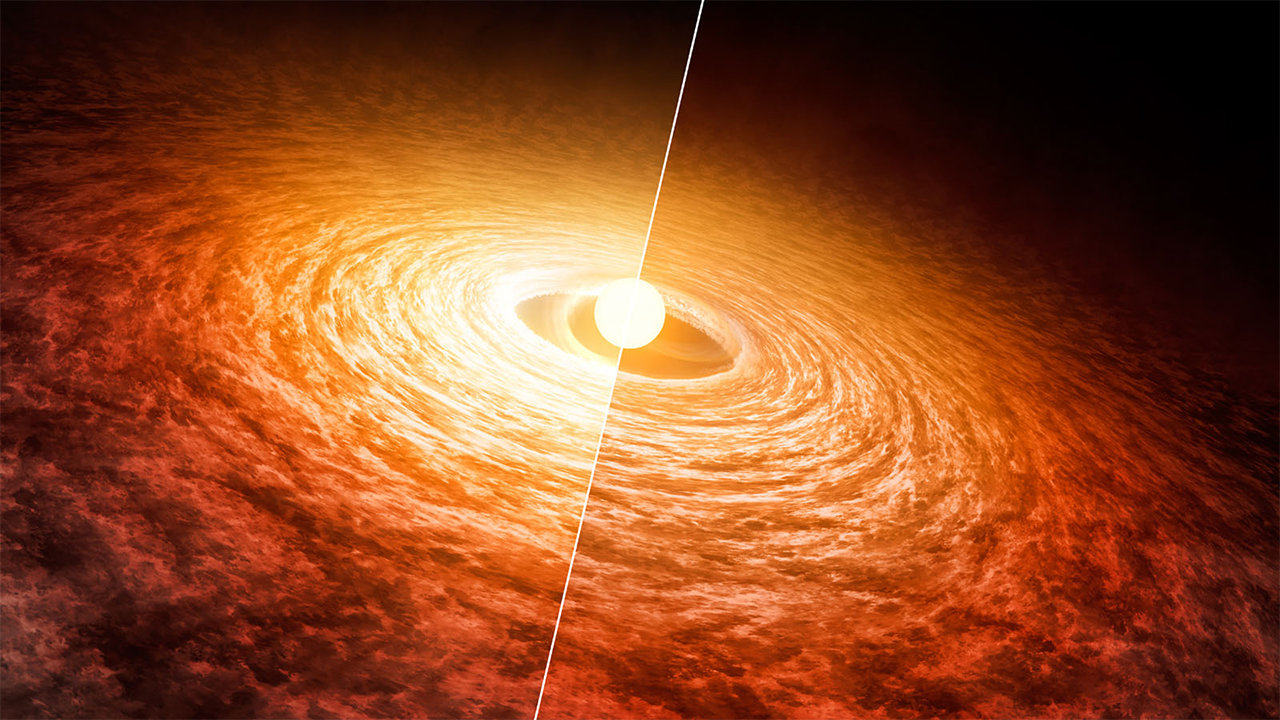Chapter 2 – From Cloud to Disk
From Cloud to Disk
The newborn star is a feisty baby, shooting out violent jets of magnetically accelerated material as it gets nourishment from the gas and dust whirling around it. Like a blob of pizza dough flattening out as a chef spins it, this material condenses into a flat disk. That "dough" has a preferred direction inherited from the collapse of the cloud. That same spin will remain with the system for its entire life, unless another star system gets close enough to interact with it.
At about 100,000 years, the cloud starts to thin out enough to reveal two distinct structures: a newborn star and a fluffy, diffuse disk of gas and dust.
Q. How do we know if there are planets forming in a disk?
A. Spirals and gaps.
Scientists who study these very young systems are looking for features in the disk that indicate places where planets may be forming. At first, the gravity of a baby planet will warp material around it into a spiral shape. But as the planet grows bigger, it will carve out a larger gap in the disk.

Yasuhiro Hasegawa, a researcher at NASA’s Jet Propulsion Laboratory, has been studying one famous example: HL Tau, using the Atacama Large Millimeter/submillimeter Array (ALMA) -- a group of radio telescopes in Chile. Gaps in this disk, making it look like rings, may be the footprints of baby planets, as research has revealed in the last couple of years. “This discovery was a big leap in our field,” he said.
A more mysterious system is called TW Hydrae, the closest star we know that still has a gas-rich protoplanetary disk (although it is still 175 light-years away). ALMA has also revealed striking images of this disk with gaps that suggest planetary formation. However, the gaps appear in vastly different places depending on which wavelength of light was used -- radio waves detected by ALMA tell a different story than optical light from the European Southern Observatory’s Very Large Telescope. “The question is, why are there differences? What's that coming from?” said Hannah Jang-Condell of the University of Wyoming. “It’s a real puzzle.”

NASA’s James Webb Space Telescope, planned for a 2021 launch, could teach us much more about disks like these by measuring the heat radiation coming from them in infrared light.
Planetary 'Crumbs'
The whole system is still mostly hydrogen and helium, with about 100 times more gas than dust in the disk. The dust will be critical to forming planets, containing elements such as carbon and iron.
"Planets are essentially the crumbs that don’t end up in the star," said Joel Green, scientist at Space Telescope Science Institute.

NEWS FLASH: Gluttonous young star
Changes in stars and their disks often happen over much longer periods than human lifetimes. But the young star FU Orionis has shown marked mood swings in a matter of decades, offering a rare look at a planetary nursery under construction.

In 1936, astronomers observed FU Orionis becoming 100 times brighter than normal – energy emitted as the star gobbled up gas and dust from its surrounding disk. More recently, astronomers used NASA’s Stratospheric Observatory for Infrared Astronomy (SOFIA) and the Spitzer Space Telescope to check in on the young star. They found that the star has been eating the innermost part of its disk, and that the star’s overall brightness has been slowly fading since 1936.
The initial flare-up seen more than 80 years ago would have altered the chemical composition of material swirling closest to the star. If that material one day forms planets, the fates of those worlds will be altered by FU Orionis’s snacking.
How do these crumbs that survive the star’s hunger become planets? Check out Chapter 3 to find out.
